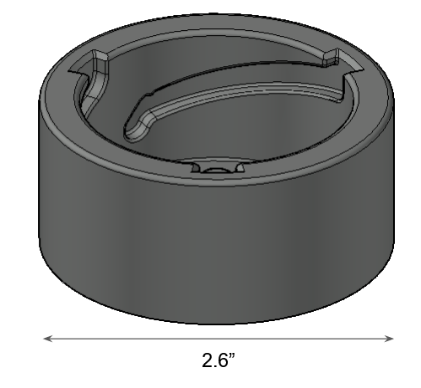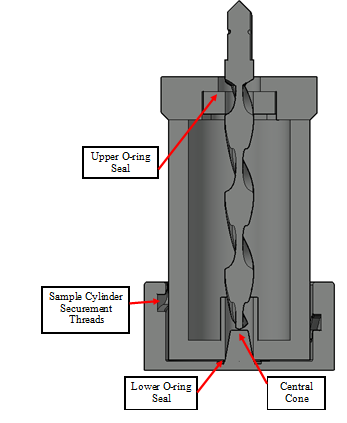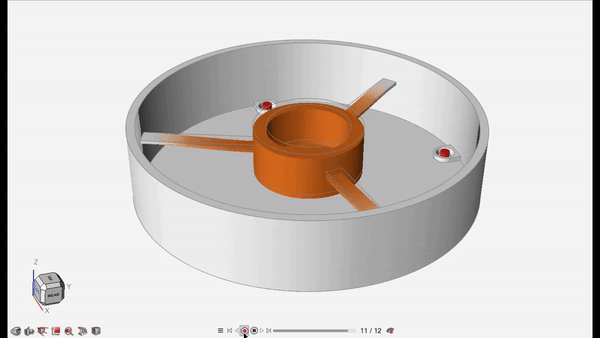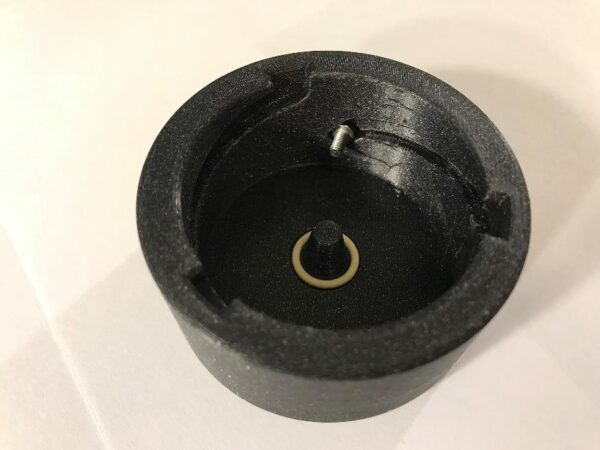Returning Samples of Hypothesized Surfaces – MTU
INSTITUTION
Michigan Technological University
CLASS
Copper Class (2021 – 2022)
STUDENT TEAM
Andrew Ervin, Mechanical Engineering
Erin Goff, Mechanical Engineering
Valerin Hernandez Mendoza, Mechanical Engineering
Jared Jarvis, Mechanical Engineering
Erik Pitcher, Mechanical Engineering
SCIENTIFIC AND TECHNICAL GUIDANCE
Dr. Jeffery Allen, Professor, Mechanical Engineering-Engineering Mechanics, MTU
Dr. Cassie Bowman, Associate Research Professor, School Of Earth and Space Exploration, ASU
Dr. James DeClerck, Professor, Mechanical Engineering-Engineering Mechanics, MTU
Dr. Kazuya Tajiri, Associate Professor, Mechanical Engineering-Engineering Mechanics, MTU
Dr. Mary Zadeh, Lecturer, Mechanical Engineering-Engineering Mechanics, MTU
Manufacturing GUIDANCE
John Lund Tim Gerst
Bob Page Fisher Solberg
Mark Somero Jake Lundin
Marty Toth
Project Video
PROJECT DESCRIPTION
To better understand the Psyche asteroid, Arizona State University (ASU) and NASA are planning the launch of an orbiter mission in 2022. Many years later, after the orbiter arrives and data is collected, scientists and engineers may wish to propose another landing and sample return mission. However, that requires extensive scientific research and planning before such a mission can succeed. This is where we come in.
ASU and NASA have asked several university senior capstone programs nationwide, including Michigan Technological University (MTU), to assist in the development of solutions for landing a rover, excavating, and returning metallic surface samples. We were specifically tasked with overseeing the return of future samples from Psyche, and this includes placing the samples into orbit around Psyche safely, uncontaminated, and in pristine condition, where they would be returned to Earth shortly thereafter. The samples must be capable of surviving reentry into Earth’s atmosphere, which includes enduring vibrational shocks and temperature changes, while also preventing air and particle contamination within the cylinders.
There have been other sample return missions before from other solar system bodies, but this mission is unlike any that have come before. Very little is known of this metallic asteroid, so all aspects of the craft design must be engineered to overcome the worst possible outcome. Teams assumed that the surface of Psyche is relatively rough with metallic or rocky terrain, so that we may overcome whatever obstacles are found once more is learned of Psyche’s surface.
Our main focus was how to secure and seal the sample cylinders so that they could make it back to Earth intact and uncontaminated. We decided to utilize the sampling team’s robotic arm and motor to get the samples secured into our launch vehicle. Keeping in mind the basic premise of a BNC twist lock connector, we designed a cylinder receptacle for the cylinders to lock into, which would both secure and seal them. The design needed to allow for both the locking of the cylinder into place, as well as the removal from storage within the rover. Due to a lack of strength within the robotic arm, the groove design needs to promote only a twisting action to secure the cylinder; no downwards force can be relied upon to press the cylinder into place. Multiple groove styles and bases were 3D-printed and tested until a specific groove configuration stood out. A Finite Element Analysis (FEA) was conducted to ensure that the grooves would withstand the forces acting on it when the sample cylinder was locked in.


The base pictured to the above left shows the final design that was produced. The schematic pictured above to the right provides a better understanding of the interaction between this base and sample cylinder. An o-ring is placed within the groove around the middle cone. The cylinder will be threaded into the base, and both the slight protrusion along the top of the groove, as well as the angled pocket at the end of the groove, will secure it in place. The height of this groove is such that it compresses the o-ring around the base of the cone. The middle cone will push up on the drill bit and compress an o-ring that sits in the top of the cylinder. This will create an airtight seal within the cylinder itself so that the samples remain uncontaminated over the course of its journey to Earth. The end of the groove is shaped in such a way that it secures the cylinder in place.
Vibration isolation testing was simulated to ensure that the cylinder would be able to withstand landing and launching. The final design can be seen animated below, where the base of the cylinder is in the center and is attached to the outer ring using negative-stiffness flexures.

Although we were able to perform vibration analysis in FEA, showing displacements would occur at the grooves in the base, we were unable to physically test the securing forces and sealing of the cylinder. Next steps would require that the base be manufactured from metal to obtain more accurate data on sealing forces between the base and the sample cylinders.

The extent of the prototyping included manufacturing the base out ABS plastic (pictured above), but it is not feasible to perform accurate testing on such a material in this scenario. Performing seal testing in a vacuum chamber upon the final design would ensure an airtight seal is viable within the cylinder while keeping contaminants out. Physical testing of modal vibration should also be conducted upon the final design.

